Abstract
The vertical growth responses of corn seedlings (Zea mays L. Mo17 × B73) were determined over an 8-hour period. When seedlings were decapitated 3 millimeters from the coleoptile's tip and supplied with indole-3-acetic acid (IAA) in 1.5% agar blocks, the response was dependent both on time and IAA concentration. The dose-response curves changed in shape and magnitude depending on the total time of IAA application. High concentrations (>3.2 × 10−6 molar) initially produced high relative growth rates that decreased back to the intact rate (0.03 millimeter per hour per millimeter) after 3 hours. Low concentrations (<1.0 × 10−6 molar), or agar blocks without IAA, resulted in a rapid decrease from the intact rate to a level that stabilized at 0.01 millimeter per hour per millimeter until the growth rate began to recover after 3 to 4 hours. Intermediate concentrations produced responses similar to that of the intact organ, though some features of these responses were unique.
The coleoptile curvature in response to gravity depended upon whether the coleoptiles were intact, decapitated, or decapitated and supplied with IAA. Coleoptiles decapitated and not supplied wth IAA showed little or no curvature for 3 hours after decapitation. By this time an adaptation, evoked by the low IAA level, had developed and the coleoptiles began to curve steadily. When 1.0 or 3.2 × 10−6 molar IAA was supplied, curvature was initiated within the first 30 minutes and reached a maximum rate before decreasing and stopping after 3 to 4 hours. The sequence of events in response to these concentrations was similar to the intact sequence but the curvature rate was reduced to one-third to one-half. A model for the autotropic response involving an auxin concentration-dependent, growth-modulating mechanism capable of two modes of adaptation is described.
Full text
PDF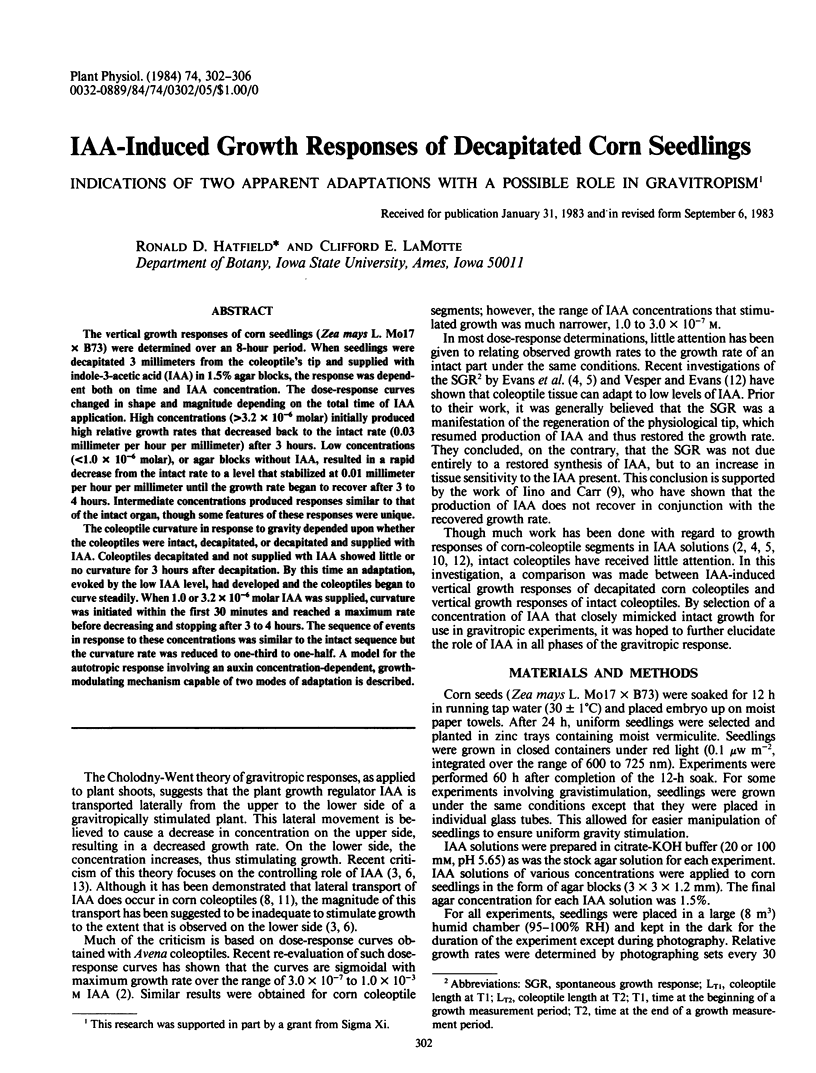
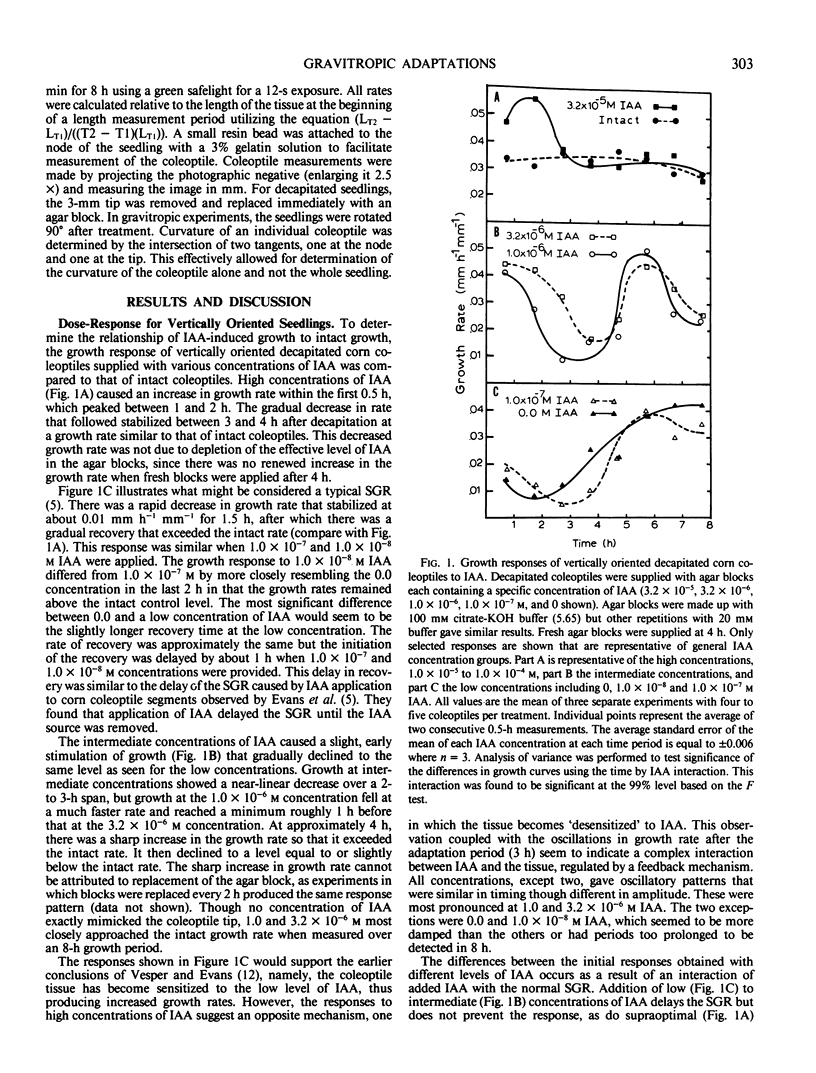
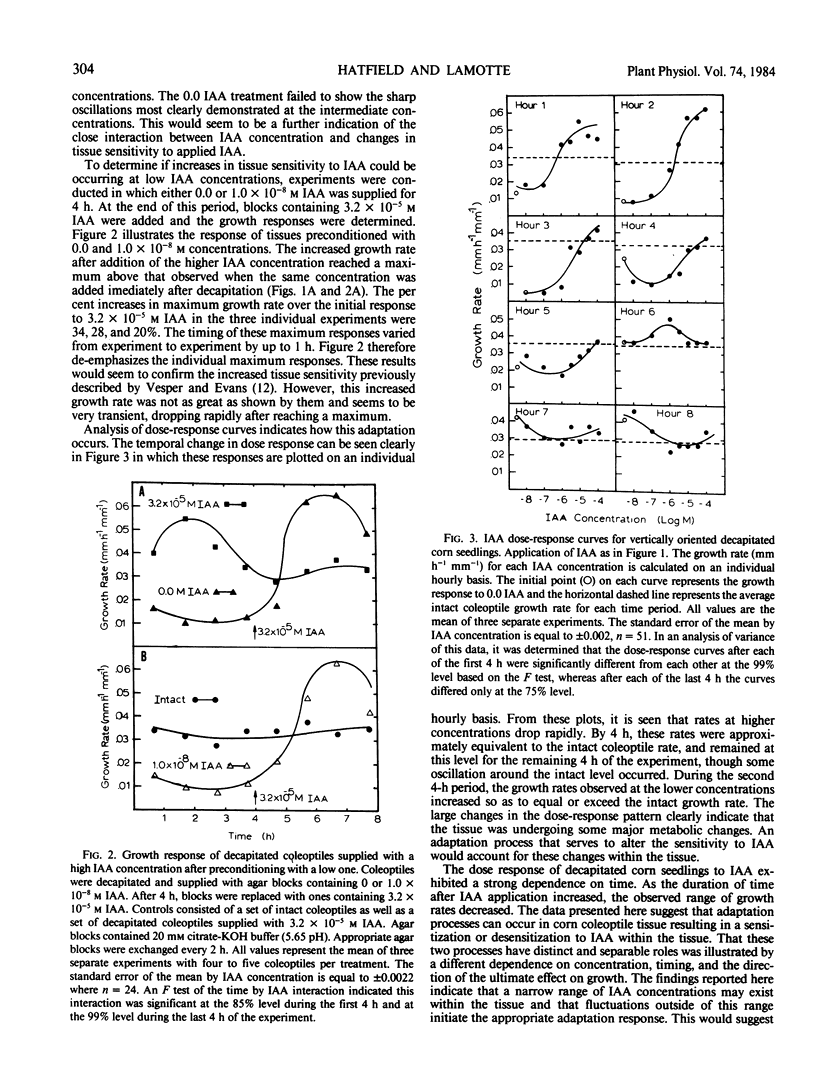
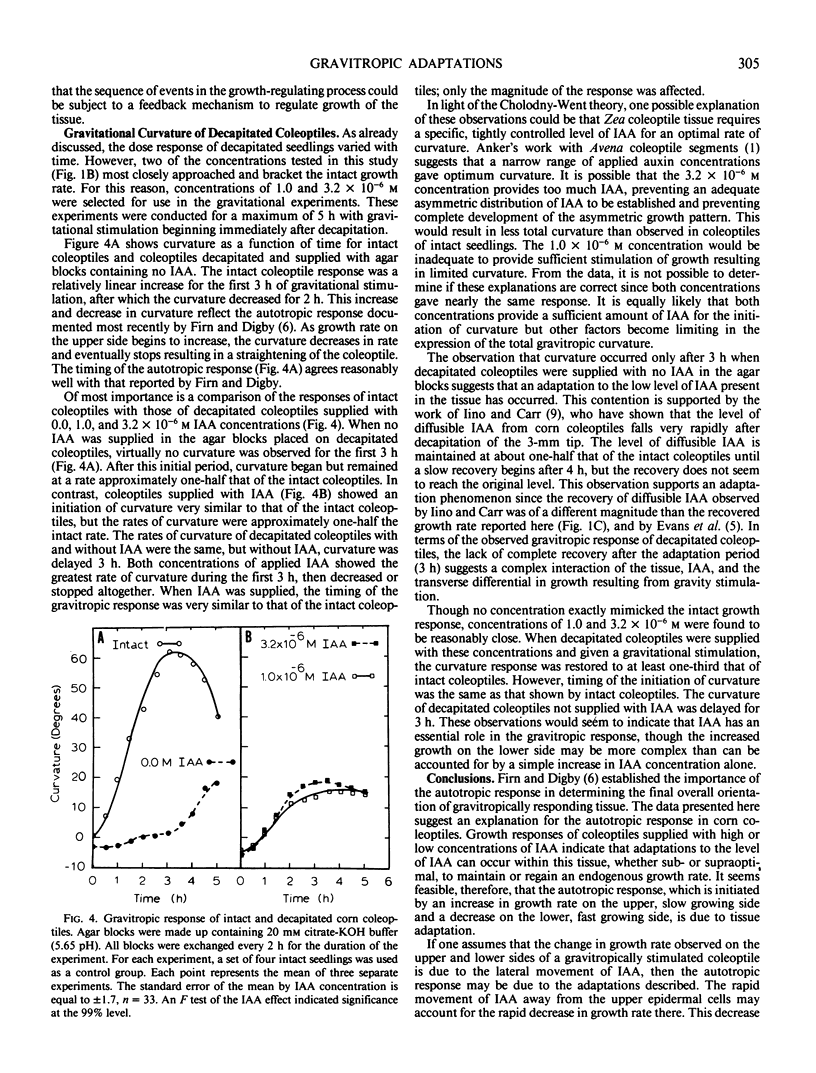
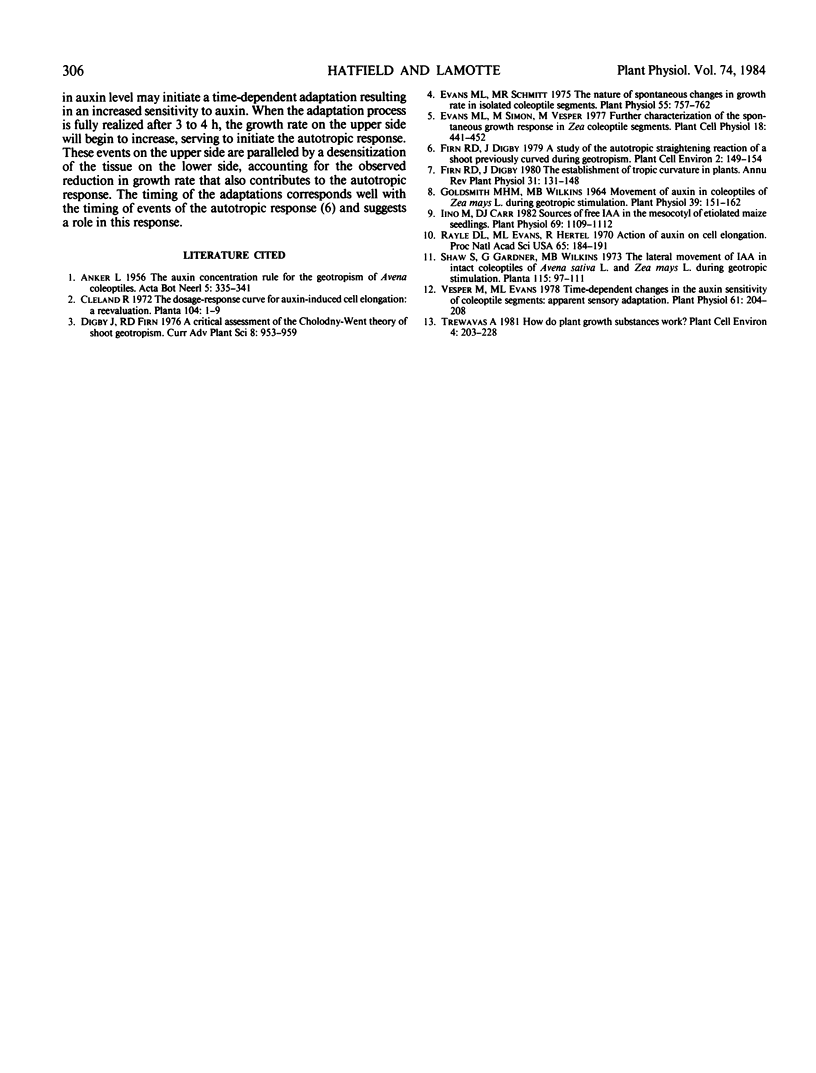
Selected References
These references are in PubMed. This may not be the complete list of references from this article.
- Evans M. L., Schmitt M. R. The nature of spontaneous changes in growth rate in isolated coleoptile segments. Plant Physiol. 1975 Apr;55(4):757–762. doi: 10.1104/pp.55.4.757. [DOI] [PMC free article] [PubMed] [Google Scholar]
- Goldsmith M. H., Wilkins M. B. Movement of Auxin in Coleoptiles of Zea mays L. during Geotropic Stimulation. Plant Physiol. 1964 Mar;39(2):151–162. doi: 10.1104/pp.39.2.151. [DOI] [PMC free article] [PubMed] [Google Scholar]
- Iino M., Carr D. J. Sources of Free IAA in the Mesocotyl of Etiolated Maize Seedlings. Plant Physiol. 1982 May;69(5):1109–1112. doi: 10.1104/pp.69.5.1109. [DOI] [PMC free article] [PubMed] [Google Scholar]
- Rayle D. L., Evans M. L., Hertel R. Action of auxin on cell elongation. Proc Natl Acad Sci U S A. 1970 Jan;65(1):184–191. doi: 10.1073/pnas.65.1.184. [DOI] [PMC free article] [PubMed] [Google Scholar]
- Vesper M. J., Evans M. L. Time-dependent Changes in the Auxin Sensitivity of Coleoptile Segments: Apparent Sensory Adaptation. Plant Physiol. 1978 Feb;61(2):204–208. doi: 10.1104/pp.61.2.204. [DOI] [PMC free article] [PubMed] [Google Scholar]


